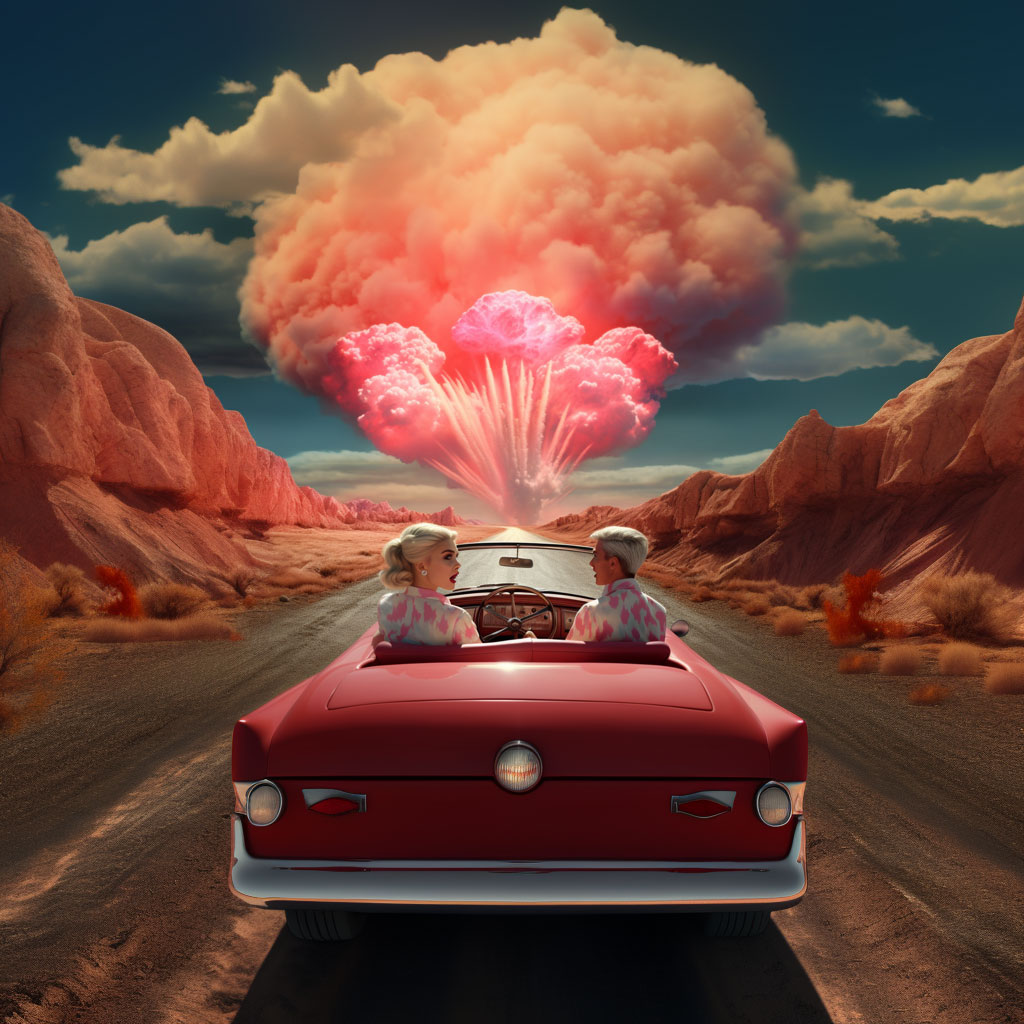
The Barbenheimer phenomenon has been one of those pop culture moments that can only happen on social media: an example of creativity, joy, exuberant weirdness and, it has to be said, some very canny movie marketing, created entirely by and for online communities. All this conversation creates a lot of data to analyse! Thanks to AI tools and the insight team here at Buzz Radar, we’ve got some answers to the question… who won Barbenheimer?
The pairing of the two distinctly different films, Greta Gerwig’s arch bubblegum fantasy, Barbie, and Christopher Nolan’s atomic bomb epic, Oppenheimer, released on the same day as a natty bit of counter programming, started as a joke. Soon, though, the idea captured imaginations. Some film fans pledged their allegiance to one or the other movie, while others made a double-bill of both, complete with outfit changes as they moved from the plastic brightness of Barbie to the edgy, darker Oppenhiemer. But which film really dominated this pop culture duel?
With a whopping 863,570 mentions, the Barbenheimer conversation reached an astounding potential audience of 6.82 billion people worldwide. The chatter reached its crescendo on the Sunday of the opening weekend with 140,300 mentions – that's an impressive 97 mentions every minute of the day.
The split was razor-thin, with Oppenheimer inching ahead at 50.5% of the conversation, compared to Barbie's 49.5% (interestingly, a reversal of their box office positions). Digging into demographics, the gender breakdown of people talking about both movies was almost even, with a slight tilt towards males at 52%.
But here’s the fascinating part: female activity was 32% higher than the baseline, while male activity was 18% lower. Age-wise, the audience skewed younger, with 25-34-year-olds dominating the conversation.
And what's a social media showdown without emojis?
The "explosion and bomb" emojis signifying Nolan’s bleak drama (💥 + 💣) led with 26,870 uses, closely followed by Barbie’s "pink hearts, sparkle heart, and doing your nails" emojis (💕 + 💖 + 💅) at 25,720 uses.
So Oppenheimer eked out a win in the social media tug-of-war, but actually that’s missing the point. Only 21% of the total Barbenheimer conversation talked about the films individually. What’s fascinating about the Barbenheimer phenomenon is that it wasn’t really about competition at all. It wasn’t Barbie OR Oppenheimer, it was Barbie AND Oppenheimer.
The moral of the story… audiences love partnerships and the more unlikely the better. The brand teams at Warner Bros and Universal Studios probably didn’t envisage the huge amplification effect this could have had, but if they did…bravo! They certainly capitalised on it.
This isn’t the first time two big but diametrically opposed movies have beeb released on the same day. It happened back in 2008,when the exuberant, camp and sunny ABBA musical Mamma Mia released the same day as Christopher Nolan’s pitch-black Batman epic The Dark Knight, for example. And yet we didn’t get “Mamma Knight” memes. Why? Social media was in its infancy back then. What we’re seeing from Barbenheimer is how the medium has evolved into a powerful platform for driving spontaneous, user-generated pop culture conversations that, in turn, drive sales.
So what can brands take from this? The key take away is the importance of anticipating, tracking and leveraging these organic trends, or risk missing out on significant cultural moments and conversations that can have a significant impact on sales.
For us, the big lesson is how audiences interact with and digest pop culture in the social media age. The way fans instinctively blended Barbie AND Oppenheimer and leaned into their differences shows there is a demand for richer, more diverse cultural consumption that defies traditional genre limitations. Brands should take note: audiences are looking for innovative, even audacious, cross-genre marketing and content partnerships.
The underlying 'collective fun' aspect of Barbenheimer also confirms something we’ve long known; in an era marked by increasing digital connectivity, such playful, collective engagement will likely be a key driver of future pop culture trends. Our research suggests a marketing potential greater than the sum of its parts. This isn’t just about catching lightning in a bottle – it’s about understanding how audiences engage with content, and how that can be leveraged into tangible results.
Patrick Charlton Published on July 28, 2023 11:08 am

